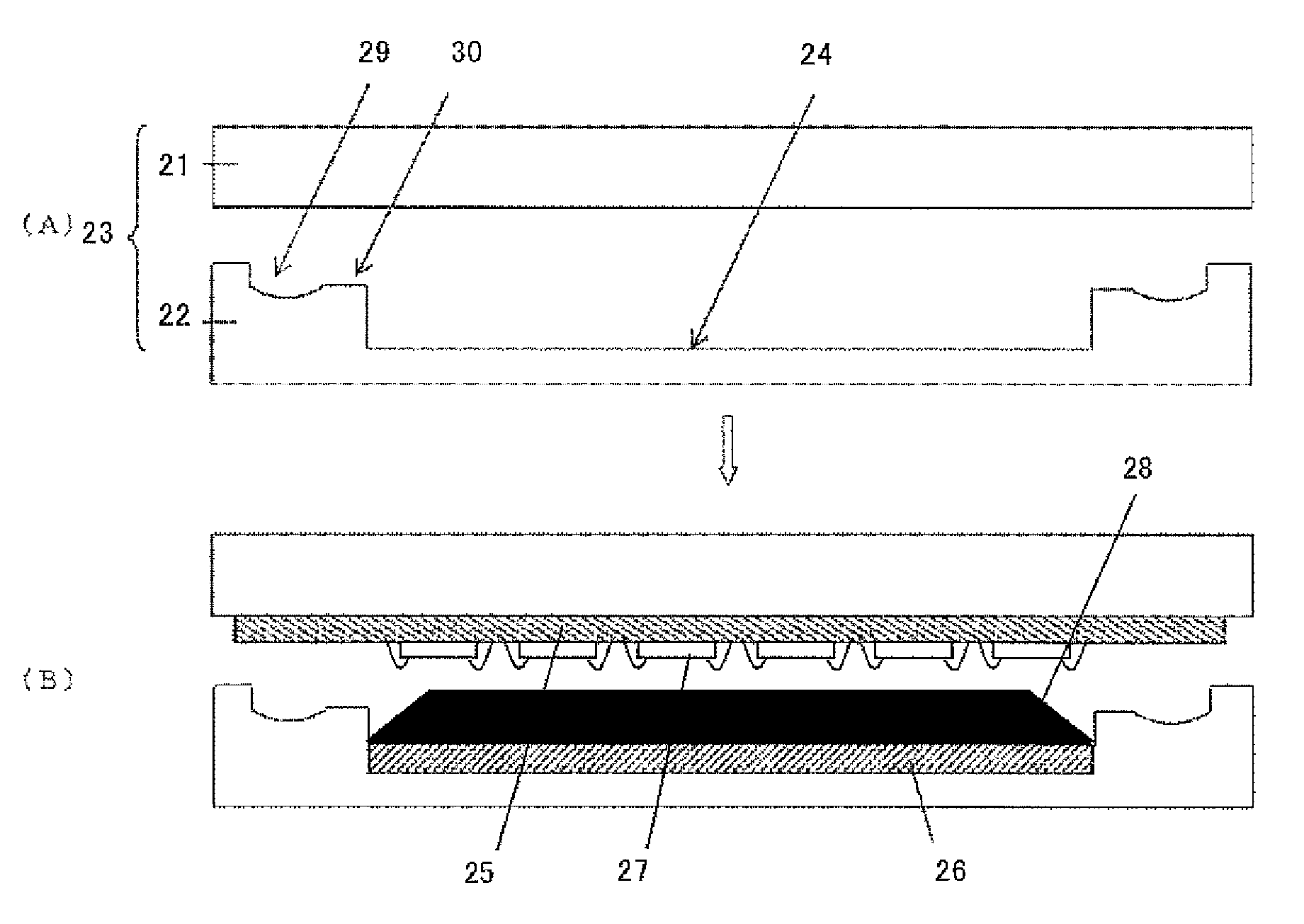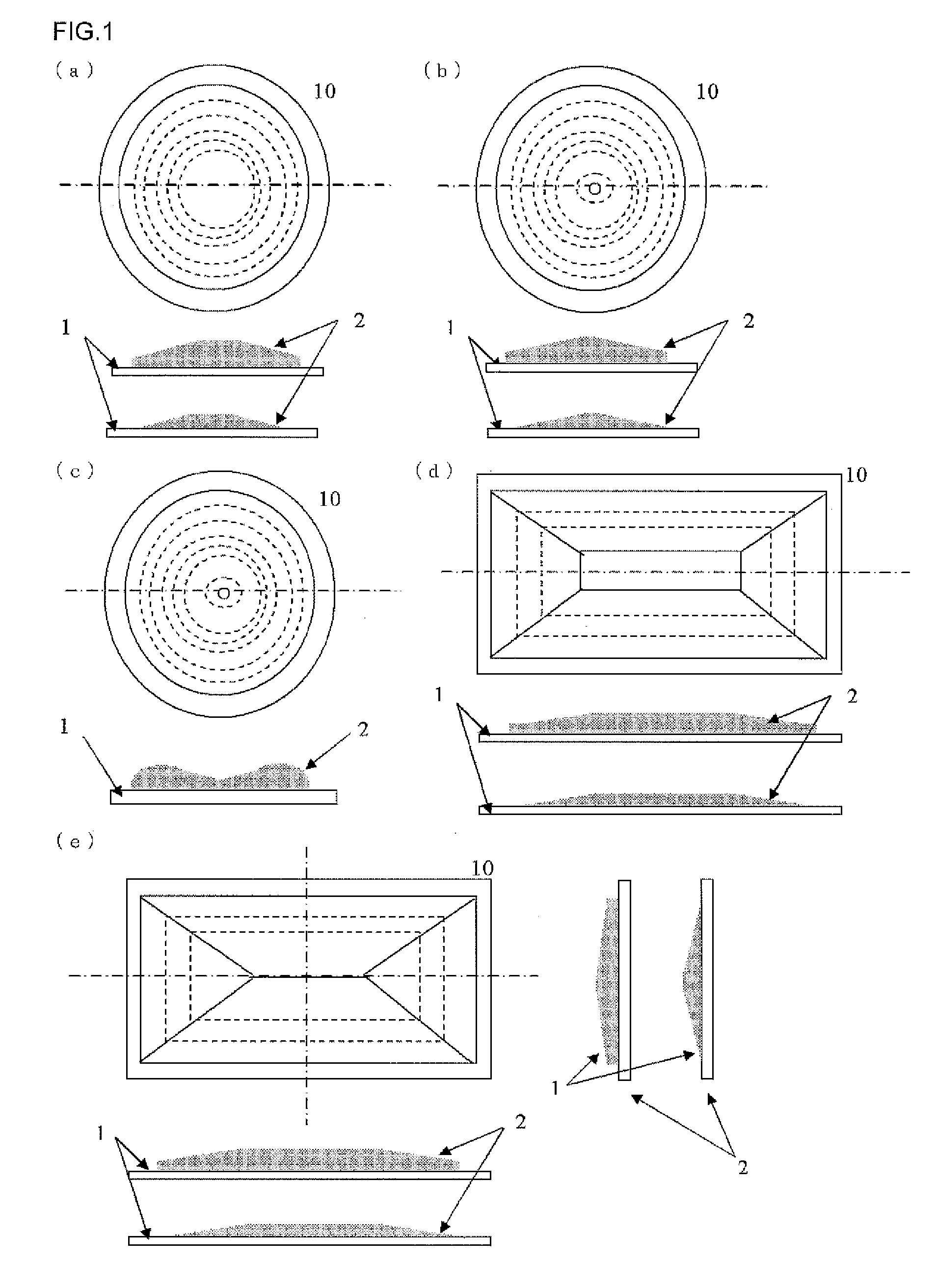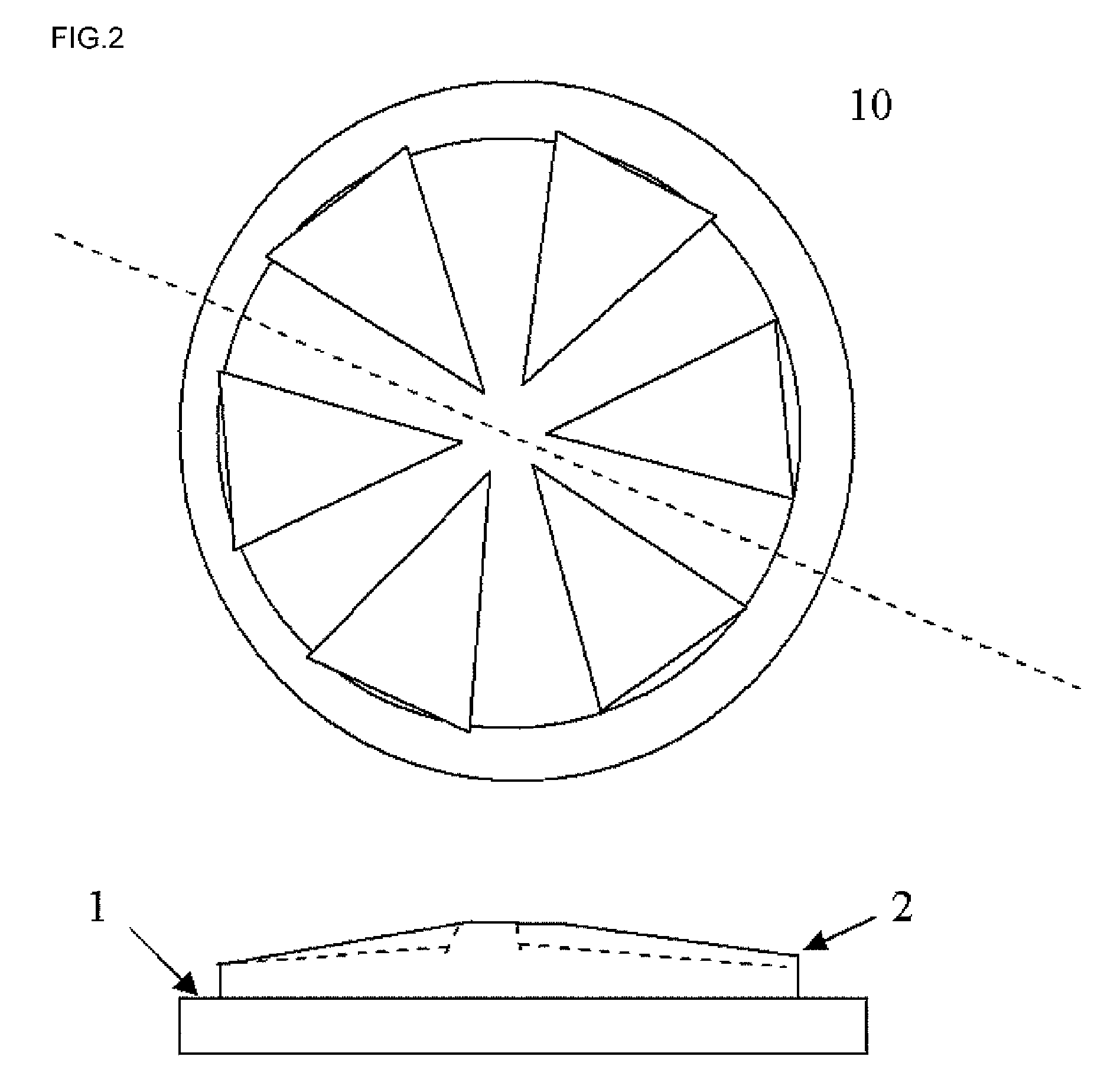Encapsulant, encapsulated substrate having semiconductor devices mounting thereon, encapsulated wafer having semiconductor devices forming thereon, semiconductor apparatus, and method for manufacturing semiconductor apparatus
a technology of encapsulating substrate and encapsulating wafer, which is applied in the direction of semiconductor/solid-state device details, thin material processing, semiconductor devices, etc., can solve the problems of increasing the amount of resin needed for forming the encapsulating layer, the inability to produce enough moldable properties at present, and the inability etc., to achieve excellent encapsulating properties and avoid the effect of failure to meet the requirements of filling ability
- Summary
- Abstract
- Description
- Claims
- Application Information
AI Technical Summary
Benefits of technology
Problems solved by technology
Method used
Image
Examples
example 1
Preparation of Composition for Forming the Thermosetting Resin Layer
[0148]60 parts by mass of a cresol novolac type epoxy resin (EOCN1020, available from Nippon Kayaku Co., Ltd.), 30 parts by mass of a phenol novolac resin (H-4, available from MEIWA PLASTIC INDUSTRIES, Ltd.), 400 parts by mass of spherical silica (available from TATSUMORI LTD., average particle size: 7 μm), 3 parts by mass of a hydrotalcite compound (available from KYOWAKASEI Co., Ltd. Mg4.5Al2(OH)13.3.5H2O, trade name: DHT-4A-2), 10 parts by mass of zinc molybdate (available from Japan Sherwin-Williams Company, trade name: 911B), 0.5 part by mass of lanthanum oxide (available from Shin-Etsu Chemical Co., Ltd.), 0.2 part by mass of a catalyst TPP (triphenylphosphine, available from HOKKO CHEMICAL INDUSTRY Co., Ltd.), 0.5 part by mass of a silane coupling agent (KBM403, available from Shin-Etsu Chemical Co., Ltd.) were sufficiently mixed by a high speed mixing apparatus, and then mixed and kneaded under heating by a ...
example 2
Synthetic Example 1
Organic Silicon Compound Having a Non-Conjugated Double Bond (A1)
[0156]In a toluene solvent were dissolved 27 mol of an organosilane represented by PhSiCl3, 1 mol of ClMe2SiO(Me2SiO)33SiMe2Cl and 3 mol of MeViSiCl2, and the solution was dropped into water, co-hydrolyzed, rinsed, neutralized by alkali cleaning, and dehydrated, and then the solvent was stripped to synthesize an organic silicon compound having a non-conjugated double bond (A1). A composition ratio of a constituent unit of this resin is represented by the formula: [PhSiO3 / 2]0.27[—SiMe2O—(Me2SiO)33—SiMe2O—]0.01[MeViSiO2 / 2]0.03. A weight average molecular weight of the compound was 62,000, and a melting point of the same was 60° C. Incidentally, Me and Ph in the compositional formula herein represent a methyl group and a phenyl group, respectively, and Vi represents a vinyl group represented by —CH═CH2 (hereinafter the same.).
synthetic example 2
Organohydrogen Polysiloxane (B1)
[0157]In a toluene solvent were dissolved 27 mol of organosilane represented by PhSiCl3, 1 mol of ClMe2SiO(Me2SiO)33SiMe2Cl and 3 mol of MeHSiCl2, and the solution was dropped into water, co-hydrolyzed, rinsed, neutralized by alkali cleaning, and dehydrated, and then the solvent was stripped to synthesize an organohydrogen polysiloxane (B1). A composition ratio of a constituent unit of this resin is represented by the formula: [PhSiO3 / 2]0.27[—SiMe2O—(Me2SiO)33—SiMe2O—]0.01[MeHSiO2 / 2]0.03. A weight average molecular weight of the resin was 58,000, and a melting point of the same was 58° C.
[Preparation of Composition for Forming Thermosetting Resin Layer]
[0158]To a composition containing 50 parts by mass of the above-mentioned organic silicon compound having a non-conjugated double bond (A1), 50 parts by mass of the organohydrogen polysiloxane (B1), 0.2 part by mass of an acetylene alcohol series ethynylcyclohexanol as a reaction inhibitor, and 0.1 part...
PUM
 Login to View More
Login to View More Abstract
Description
Claims
Application Information
 Login to View More
Login to View More - R&D
- Intellectual Property
- Life Sciences
- Materials
- Tech Scout
- Unparalleled Data Quality
- Higher Quality Content
- 60% Fewer Hallucinations
Browse by: Latest US Patents, China's latest patents, Technical Efficacy Thesaurus, Application Domain, Technology Topic, Popular Technical Reports.
© 2025 PatSnap. All rights reserved.Legal|Privacy policy|Modern Slavery Act Transparency Statement|Sitemap|About US| Contact US: help@patsnap.com



